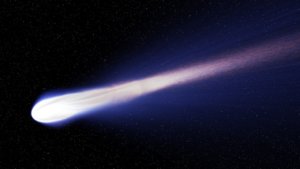
by Dr Manjir Samanta-Laughton | Dec 30, 2020 | Paradigm Revolution, Punk Science, Science
Volcanoes are supposed to be hot, so why are cold volcanoes found all over the solar system? In this article, we are going to be exploring Cryovolcanism.
Hot vs Cold
You are probably aware of volcanic activity on Earth – Volcanoes spew hot lava which is molten rock and various gases. It is believed that heat is part of the mechanism of why volcanoes occur. So why is it that ice-cold cryovolcanoes are being found in various part of the solar system? How can volcanoes be cold?
Not only does cryovolcanism exist but we are finding it throughout the solar system. The dwarf planet, Ceres was expected to be a boring, inactive lump of rock. But instead, we found cryovolcanoes on Ceres as well as on Titan, which is one of the moons of Saturn and also on Pluto.
Pluto is really far out from the sun and so we expect it to be extremely cold, frozen and inactive. So the volcanic activity on Pluto was a bit of a surprise.
Do we really understand volcanoes?
It may all come down to the fact that we have mistaken what volcanoes are in general. We think we know how volcanoes work on planet Earth. But if you look closely, you will see that people who study these things don’t really know exactly why volcanoes happen. This issue of Geographical magazine contains an article that admits that we don’t even know the basics of how volcanoes work.

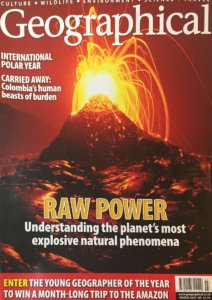
So it’s a bit of a misnomer to say that we know exactly why volcanoes happen on Earth, let alone cryovolcanoes in space.
Commonalities in eruptions
I think we should look beyond individual types of eruptions to a single mechanism that unites them all. What I’m saying is that eruptions and volcanoes are all expressions of the same principle: The Black Hole Principle.

The Black Hole Principle
If you remember, The Black Hole Principle says that light comes in from higher dimensions and then splits into matter and antimatter and these combine again to form light. So you have these intermittent eruptions of energy and particles.
We have also looked in previous episodes at how The Black Hole Principle creates water and even substances that we normally call ‘fossil fuels’ such as methane.
And that’s indeed what we see coming out of these Cryovolcanoes: methane, water, and ammonia.
In fact, we actually see water vapour coming out of volcanoes on Earth as well. In another previous episode, we looked at how stars actually emit water bullets.
Transcending the eruption
This is what I’m putting forward, that we have to transcend this concept of a volcanic eruption of ‘stuff’. The energy starts out in a different dimension and comes through and expresses itself at every single level of the universe.
So whether that be a hot planet or a cold planet, the energy is the same. The principle is the same. The Black Hole Principle is creating volcanoes at every level that we see them. Cryovolcanism is to be expected because all these planetary bodies are working in the same way just at different scales and temperatures.
Predictions and Conclusions
We not only expect to see more eruptions happening in our own solar system but even beyond our solar system because they are caused by a universal principle.
I hope that’s explained a bit more about cryovolcanism and volcanism in general, if you’d like to see more, please subscribe below and leave a comment to let me know what you think.
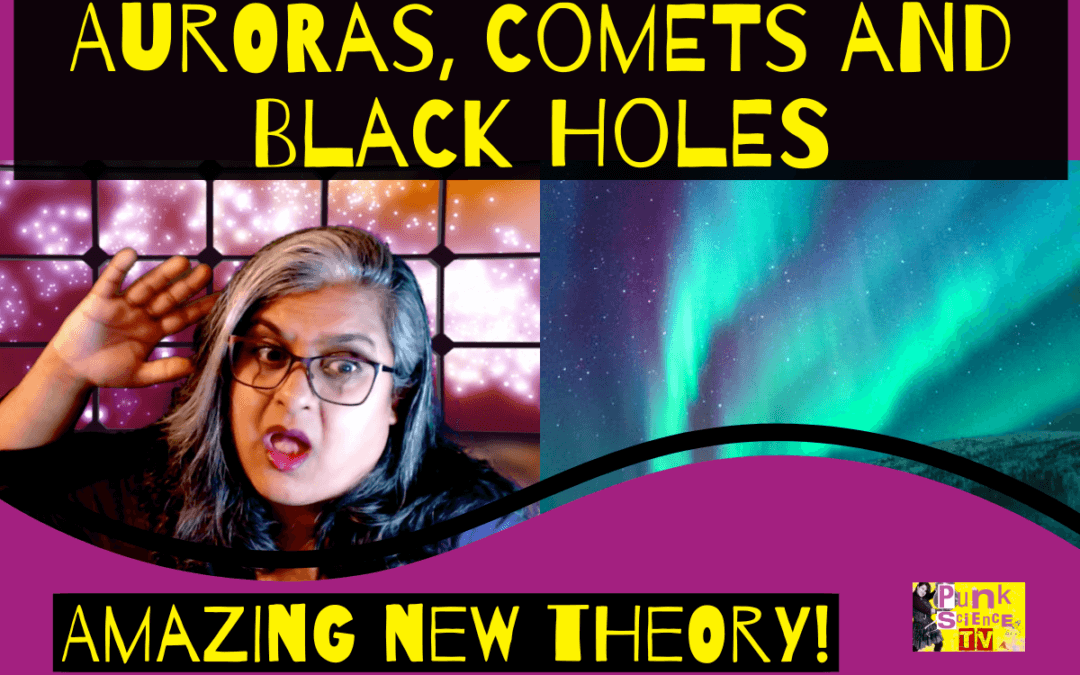
by Dr Manjir Samanta-Laughton | Dec 23, 2020 | Punk Science, Science
Auroras on a comet?
A lot us are familiar with the concept of Northern Lights and Southern Lights or Aurora Borealis and Australis as they are otherwise known. But why have scientists spotted an aurora on a comet? They are also seen around moons and other planets. Is the received wisdom on Auroras correct and what do they have in common with Black Holes? These are the questions we are asking today: what is the connection between auroras, comets and black holes?
A spectacular light show
You may be familiar with the concept of the Northern Lights which are spectacular changing colours that are sometimes seen in the sky in countries close to the North pole.
We are told that this spectacular light show actually has its origins with the sun as the solar wind, consisting of fast-moving charged particles, interacts with the magnetosphere of our planet causing various elements in the Earth’s atmosphere to create the colours that we see.
And for many years, we have accepted this explanation. Except as space exploration continues, we find some anomalies that don’t fit this theory. Auroras are seen on planets that we previously supposed were not able to have them. Jupiter has an aurora that is deemed too powerful for this usual explanation.
And in 2020 scientists discovered that even comets have auroras! This particular aurora was in the ultraviolet aspect of the spectrum so invisible to us.
But it leaves us with the question; how is it possible that something as small as a comet can generate a magnetic field large enough to interact with the solar wind and generate an aurora? The same question arises when we find auroras on distant moons too.
What exactly is going on?
Northern and Southern Lights pulse at the same time
I find it really intriguing that the northern and southern hemispheres on the earth both have these auroras at the same time – they are known as the Aurora Borealis and Aurora Australis respectively.
Actually, rather than coming from the outside in as we would expect particles from the sun to do, the charged particles go from the middle to the poles and you see both the northern and southern hemisphere light up at the same time. Not everyone mentions this and most of the diagrams show the particles going the other way.
In other words, the charged particles that create auroras on the Earth are similar to bipolar jets that we see around black holes.
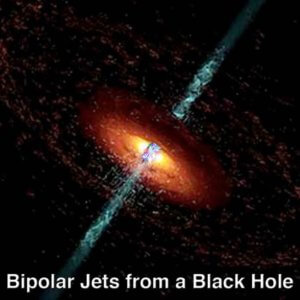
Even though they are supposed to be created by different mechanisms, we see auroras around planets and moons and they consist of fast-moving charged particles.
A new theory of Auroras – they are bipolar jets!
I think that auroras are an expression of The Black Hole Principle: the same mechanism is happening in black holes in space as on the earth and also many bodies throughout space as well.
So you have these poles of charged particles that are going from the centre to either side, going to the north and the south poles of the earth.
The fast-moving charged particles, such as electrons, are creating these northern and southern light shows that we see with the interactions with the elements of the atmosphere.
But it’s not the just the solar wind interaction, it’s the interior of Earth or whichever planetary body, whether that be a moon or a comet, Jupiter or anything else that we’re finding that has auroras, it’s all the same sort of mechanism.
If we put it that way, then we’re looking at auroras are caused by bipolar jets of fast-moving charged particles similar to those found in black holes.
The Black Hole Principle and Auroras
We can see auroras as an expression of the Black Hole Principle. That’s what I think is also happening with the auroras that we’re seeing around comets.
We know that black holes create jets of fast-moving electrons due to The Black Hole Principle. These are powerful and intermittent and often are emitted in jets.

The Black Hole Principle
I think the same mechanism that creates auroras around comets is actually creating auroras at every single level, be it Jupiter or the Earth or moons. It‘s these bipolar jets that we see in black holes that are creating the auroras around planets and various bodies.
I hope you found this article and TV episode on Auroras, Comets and Black Holes interesting. Please leave your comments below and let me know what you think.

by Dr Manjir Samanta-Laughton | Aug 12, 2020 | Punk Science, Science
What creates Saturn’s rings?
Did you know that scientists still don’t know what created the rings of Saturn?
In this episode, we look at the data from the Cassini probe to see if it can shed light on this enigma.
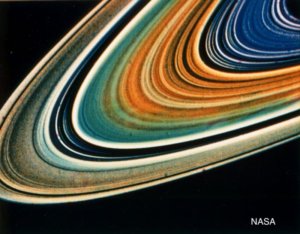
A cosmic mystery
First spotted by Galileo, Saturn’s rings are a source of fascination for human beings. So it seems strange that after all this time, we still don’t know how they were created.
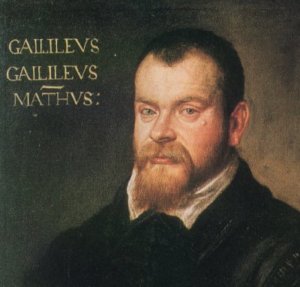
Galileo was thought to have first viewed Saturn’s rings
Cassini’s mission
Thanks to the Cassini missions we have now visited Saturn’s rings and found a few more details.
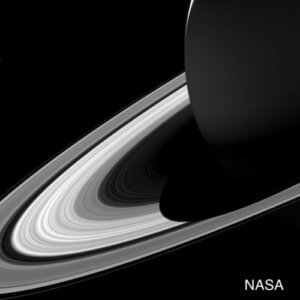
Because the rings are very bright and reflective, scientists have concluded that they are younger than the planet Saturn itself because there hasn’t been enough time for dust particles to decrease this reflectivity.
Was it a collision?
One of the best explanations that scientists have come up is – a collision! Yes, just as in previous examples discussed on this site, when they don’t have an explanation for an observed phenomenon they conclude that it is a collision or an explosion.
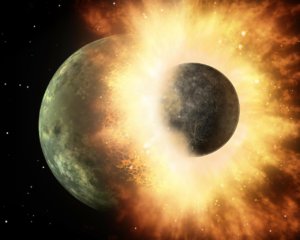
12019 / Pixabay – Planetary Collision
Can the Black Hole Principle provide the answer?
According to The Black Hole Principle, creation is happening at every single level coming in from infinite light all the way through to our reality below the speed of light.

The Black Hole Principle
As I have said on this site many times before, this also creates water and organic compounds such as methane.
It woz Saturn!
So the short answer is Saturn itself is creating the rings. Just as a black hole in a galaxy creates spiralling material.
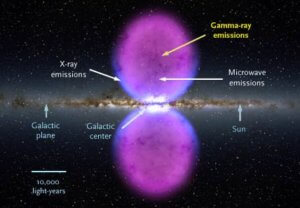
Jets from the Milky Way create gamma-ray and X-ray bubbles Credit: NASA
Saturn also is a black hole that creates water which then freezes. We have discussed before how The Black Hole Principle creates water and Saturn is no different.
The organic material created by The Black Hole Principle process within Saturn is why the inner rings have more organic material than the outer before it dissipates and also why the rings are moving so fast – this is material being ejected from Saturn.

Saturn’s spiralling rings
The Geometry of Creation
So why doesn’t every planet have rings? Each level of the Black Hole Principle expresses itself differently. It is all part of the one ultimate spiral of light – so each particle and planet is just somewhere on the spectrum of this one ultimate spiral.
What determines how it will behave? Geometry!
And if you have any doubt that geometry and mathematics are fundamental to the universe – just look at Saturn’s Hexagon at its pole.
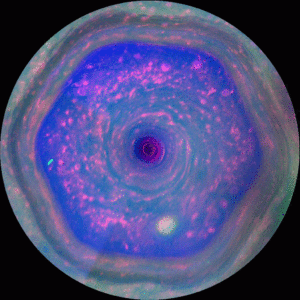
Geometry causes each level to behave in a different expression of the one pattern. In the case of Saturn, the underlying geometry creating it is beautifully staring at us.
I hope you found this episode of Punk Science TV and the article interesting. Please leave a comment below and tell me what you think

by Dr Manjir Samanta-Laughton | Jun 10, 2020 | Paradigm Revolution, Punk Science, Science
We are used to comets having long tails but recent investigations show us that comets give off fine jets, but why?
The Old Picture of Comets
We tend to think of comets as snowballs in the sky with long tails.
Ancient people used to think that they were signifiers of doom.
But it’s only in recent years that we have been able to study them in more detail because the European Space Agency has sent probes to various comets.
New Surprises
And what they found was a big surprise.
Instead of just one long tail as the comet nears the sun, comets actually give off jets of vapour and dust including water vapour.
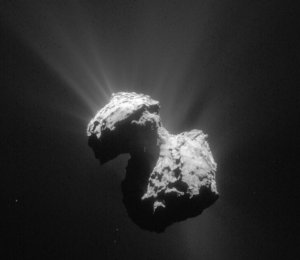
ESA/Rosetta/NAVCAM – CC BY-SA IGO 3.0
These can also be accompanied by an increase in brightness.
The video above contains another image of a comet with jets spinning through space.
Too much power
At first, people thought that these plumes must be caused by the sun which heats up ice and gases beneath the surface.
But these plumes erupt with so much power that there must be another energy source involved.
Black holes and comets
Of course from the perspective of The Black Hole Principle, we would expect comets to give off jets intermittently including water vapour.
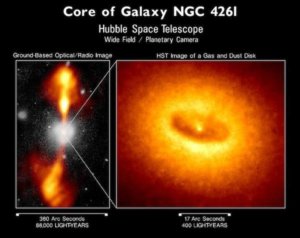
That’s because the same process is happening at different scales from a galactic black hole to even a comet.
Just as black holes give off intermittent jets, so do comets.
I hope you have enjoyed this episode of Punk Science TV.
Please leave a comment below with your thoughts about comets, jets and black holes.

by Dr Manjir Samanta-Laughton | Jun 3, 2020 | Punk Science, Shakespeare
Have scientists found evidence of a parallel dimension in Antarctica? Recently a story went viral that scientists had found evidence of a parallel dimension in which time travels backwards.
So this is what we are looking at today on Punk Science TV: Mystery Neutrinos, Antarctica and Parallel dimensions
Code-named ANITA
NASA has an instrument – a high -altitude helium balloon fitted with Radio antennas. It’s a called ANITA and it’s designed to pick up the signature of the interaction of cosmic rays from space with the Earth.
And by 2016 two incidents of high energy cosmic rays were found but they were coming up from the Earth not down from space.
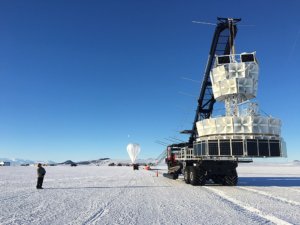
ANITA Helium balloon and instruments before deployment. Image: NASA Wiki commons
The Mystery Neutrinos
I am not a physicist but this is what I understand – there are many different types of particles including ones called neutrinos. There are some which interact very weakly. But the ones detected by ANITA in Antarctica are high energy neutrinos that actually have a wider cross-section so do bump into things.
This is why people are puzzled by what happened because for these particles to be detected by ANITA as coming out of the Earth, they would have to come down from space then back up from the Earth again.
And the physicists think that for these particles that would be impossible as they could not have made their way through the Earth through all that rock. That’s why this is such a big deal as it defies what we know about physics.
A radical solution
Neil Turok of The Perimeter Institute was reported by New Scientist as putting forward a radical solution. The particles coming up from the Earth are actually from a parallel dimension where time runs backwards. So in this model, the particles are really coming from space but we are seeing them coming up from the Earth as it is all running backwards.
That report in the media went viral.
What’s really happening?
But is there another explanation? I noticed that these types of particles have been detected before but that time they were traced to be coming from a black hole in the centre of a galaxy one that also sometimes gives off jets at the speed of light and gamma rays.
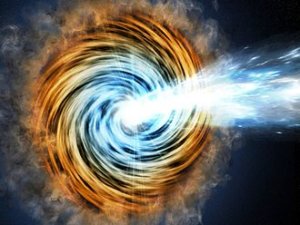
Image of Blazar – the source of high-energy neutrinos in space. Wiki commons
Hmm! So The Black Hole Principle says that every single aspect of the universe behaves in the same way only at different scales – from supermassive black holes to stars and even the Earth. So the centre of our planet should be capable of producing particles in a similar way to a galactic black hole.
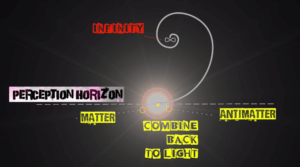
The Black Hole Principle
I even made a previous video about this some years ago. So according to the Black Hole Principle we expect cosmic rays to come from the Earth as at the centre of the Earth is a mini black hole dynamo doing much the same things as larger ones just smaller.
Problem solved!
Hope you enjoyed this episode of Punk Science TV. For more decoding of the universe follow and subscribe. ‘Till next time, thanks for watching.
















